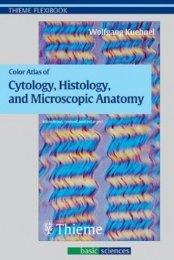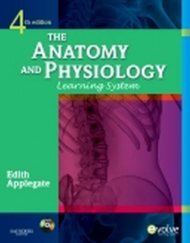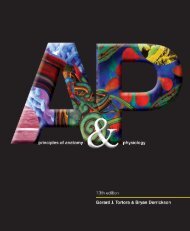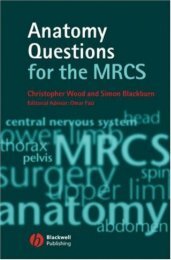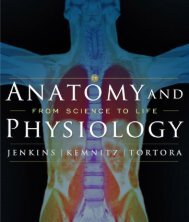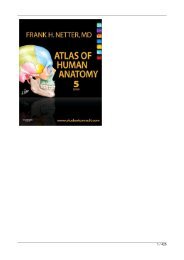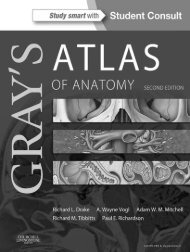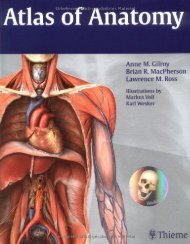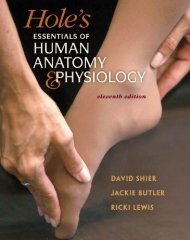urinalysis and body fluids
You also want an ePaper? Increase the reach of your titles
YUMPU automatically turns print PDFs into web optimized ePapers that Google loves.
©2008 F. A. Davis<br />
Preface<br />
As will be apparent to the readers, the fifth edition of Urinalysis<br />
<strong>and</strong> Body Fluids has been substantially revised <strong>and</strong><br />
enhanced. However, the objective of the text—to provide<br />
concise, comprehensive, <strong>and</strong> carefully structured instruction<br />
in the analysis of nonblood <strong>body</strong> <strong>fluids</strong>—remains the same.<br />
This fifth edition has been redesigned to meet the<br />
changes occurring in both laboratory medicine <strong>and</strong> instructional<br />
methodology.<br />
To meet the exp<strong>and</strong>ing technical information required<br />
by students in laboratory medicine, all of the chapters have<br />
been updated. Chapter 1 is devoted to overall laboratory<br />
safety <strong>and</strong> the precautions relating to urine <strong>and</strong> <strong>body</strong> fluid<br />
analysis. Chapter 7 addresses quality assessment <strong>and</strong> management<br />
in the <strong>urinalysis</strong> laboratory. Preanalytical, analytical,<br />
<strong>and</strong> postanalytical factors, procedure manuals, current regulatory<br />
issues, <strong>and</strong> methods for continuous quality improvement<br />
are stressed. In Chapter 8 the most frequently<br />
encountered diseases of glomerular, tubular, interstitial, <strong>and</strong><br />
vascular origin are related to their associated laboratory tests.<br />
To accommodate advances in laboratory testing of cerebrospinal,<br />
seminal, synovial, serous, <strong>and</strong> amniotic <strong>fluids</strong>, all<br />
of the individual chapters have been enhanced, <strong>and</strong> additional<br />
anatomy <strong>and</strong> physiology sections have been added for<br />
each of these <strong>fluids</strong>. Appendix A provides coverage of the<br />
ever-increasing variety of automated instrumentation available<br />
to the <strong>urinalysis</strong> laboratory. Appendix B discusses the<br />
analysis of bronchioalveolar lavage specimens, an area of the<br />
clinical laboratory that has been exp<strong>and</strong>ing in recent years.<br />
This fifth edition has been redesigned to include extensive<br />
multiple choice questions at the end of each chapter for<br />
student review. In response to readers’ suggestions, the number<br />
of color slides has been significantly increased, <strong>and</strong> the<br />
slides are included within the text to increase user friendliness.<br />
The text has been extensively supplemented with tables,<br />
summaries, <strong>and</strong> procedure boxes, <strong>and</strong> many figures are now<br />
in full color. Case studies in the traditional format <strong>and</strong> clinical<br />
situations relating to technical considerations are included<br />
at the end of the chapters. Answers to the study questions,<br />
case studies, <strong>and</strong> clinical situations are also included at the<br />
end of the book. Terms in bold italics appear in the Glossary;<br />
abbreviations in bold are listed in Abbreviations. Additional<br />
support is provided to adopting instructors in the form of<br />
accompanying test-generating software, an instructor’s manual<br />
with criticial thinking exercises for each chapter, <strong>and</strong><br />
PowerPoint presentations.<br />
We have given consideration to the suggestions of our<br />
previous readers <strong>and</strong> believe these valuable suggestions have<br />
enabled us to produce a text to meet the needs of all users.<br />
Susan King Strasinger<br />
Marjorie Schaub Di Lorenzo<br />
vii






